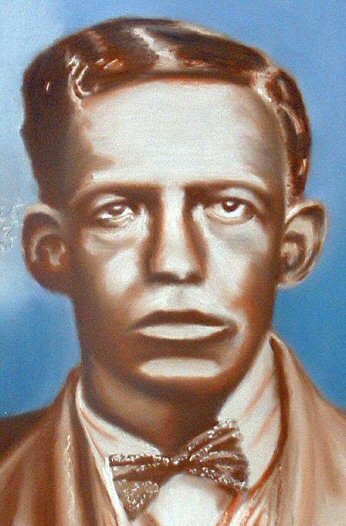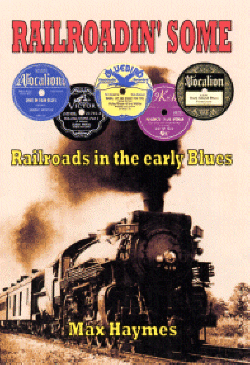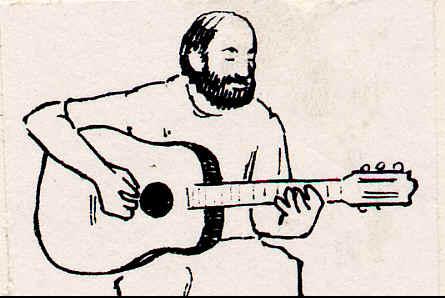|
Blues,
especially in the first decades of this century, performed several functions.
Not the mistaken white concept of “music to slash your wrists to”!! Need to
explore the world of the Southern black at this time in order to get a far
clearer understanding and appreciation of the Blues.
Blues
as entertainment makes life more bearable and ‘human’ living under an
oppressive racial regime. Also a source of’ income - black string bands often
played for whites as well as blacks, e.g. the Mississippi Sheiks. Blues also
helped pay the rent. “House-rent parties” were given with a resident blues
singer(s), such as Blind Blake plus corn liquor made on the premises or
purchased from the local bootlegger and chitlins or other cheap food would he
served. For these provisions a nominal charge was paid at the door. This
phenomenon gravitated North to Chicago, Detroit, New York, etc. Many dances
invented at these functions - often of a frank and sexual nature - a form of
self-expression. Frankie ‘Half-Pint’ Jaxon and the Tampa Red Hokum Jug Band
are a superb example.
Surviving
with the blues via implied protest in lyrics as in “Cotton Seed Blues”. As
well as obscure phrases (to the whites) and the insulting game of the
‘Dozens’- venting anger without running amok! A way of maintaining sanity, Blues
above all else is about survival. Late Mississippi blues man. Johnny Shines
said “I’m proud to be called ‘nigger’- only niggers and oxen could have
survived 300 years of slavery and racial oppression”. Of course some turned to
universal means such as booze, as is related in ‘Canned Heat Blues” (No. 5)
as well as drugs such as cocaine. While others resorted to the supernatural in
the form of hoodoo (see Guitar Nubbit and No. 10).
Sexuality
and blues overlaps with survival - another form of self-expression, otherwise
denied in a white-dominated society. Double-entendre, imagery and symbolism
enriched content of blues lyrics. It was also a strong platform for black women
to express themselves in a black male chauvinistic environment. As with Bessie
Smith (No. 12), Blues singers took popular white images of the African American
(over-sexed. promiscuous, animal-like. etc.) and turned them around as boastful
songs of their own sexual prowess - e.g. “Crawling King Snake”, “I Want It
Awful Bad’, “I’m A Rattlesnakin’ Daddy”, “Let Your Linen Hang
Low”, etc. Also accepted sexual deviance - homosexuality, lesbianism and
openly sung of male impotence.
Communication
&
solidarity in the blues
Though blues singers used the first person “I’ almost exclusively, they sang
of situations which black listeners would be able to identify with only too
readily. For instance, family troubles (a partner leaving or very ill/dying),
being jailed and sent to the corrupt county farm, for misdemeanors such as
walking on the wrong side of the street arid vagrancy, as in “No Job Blues”
by Ramblin’ Thomas (see No. 1). Perpetual unemployment, alcoholism as a way of
coping with their “lot”, gambling with dice, cards and the Numbers Racket or
“playing policy” to change their luck, etc. Black communities
would draw strength from hearing their own troubles experienced by others who apparently survived them. As
Mahalia Jackson, a famous gospel singer, once said: “they (poor blacks) would
buy a
Bessie
Smith record before they’d buy coal. Get a lot more heat from Bessie’s blues
than they would from coal fires!”
Blues
is a whole way of life, which gives black working-classes in the US the self-
esteem/respect, strength of character, an inherent sense of fun, and the will
and determination to “keep on goin”; no matter what life (and the white man)
threw at them. As an album note writer in the early 60s puts it “For a
bluesman a song is a personal expression of a feeling, or a recreation of an
event in his past. As his mood shifts or another aspect of an event comes into
his mind the song changes, and his effort is put into creating a truth -
emotionally if not factually” (Ed Denson. Notes to “The Immortal Charlie
Patton Number 1”. L. P. Origins of Jazz. OJL. I c. 1963). Denson goes on to
describe how another Delta bluesman, Bukka White” ... told us that a song must
be sung like religion is confessed - it must be truly felt if it is to mean
anything.” (Ibid.). Author. Eli Marcus, states that “As with Zen, a deep
understanding of the Blues requires the student / disciple to travel a path
enlightenment...” (“The Blues As Zen”. Eli Marcus. Unknown date /
publisher).
“The
Blues being primarily a vocal genre did not require its original working-class,
black listeners to be musicologists. If that had been the case, in the 1880s (or
whenever) the infant Blues would have been still-born. It is WHAT is sung which
is so important to the deeper understanding of the Blues and therefore of
another culture. This is how we must teach the Blues and spread its appreciation
and understanding across the world. Although Western musicians might find much
of interest in the instrumental accompaniments, they fail to reach into the
innermost depths of the Blues. That indefinable something which the listener
feels when hearing the blues, eludes musicological description; and in the case
of the early blues, musical notation. Blues pianist Walter Davis did not need to
know he sometimes used the Aeolian mode on his records, and it’s for sure his
black listeners didn’t either--I know I don’t! Yet Davis was one of the finest and most popular of Blues singers WITH HIS
OWN PEOPLE. The finest and most moving of the Blues accompaniments occurred when
the instrument was wholly integrated with the vocal, or replaced the vocal; as
with the bottleneck/slide guitar or the ‘crying” harmonica, for example.”
….
(an adaptation of a letter to John Cloy, Chair of the Music/Blues Librarian
Search Committee in the John Davis Williams Library. University of Mississippi,
Oxford, Miss. from Max Haymes on 6th. October 1992).
Back to What is the Blues?
|








